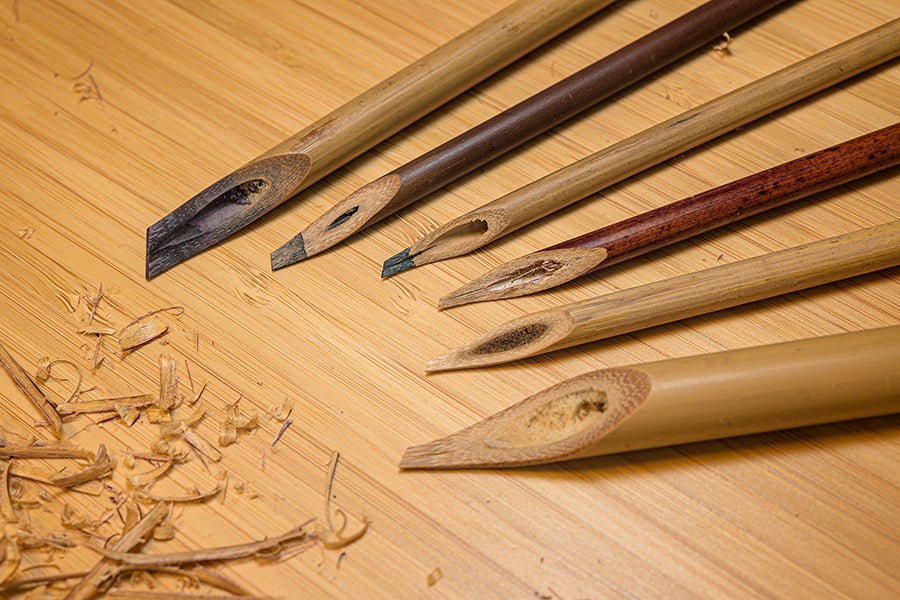Qalam
Selin Ünlüönen
Related Terms:
- Colophon (brief statement about a book’s making)
- Frontispiece (title page)
- Khatt (calligraphy)
- Kitabkhana (book atelier)
- Muthanna (mirror-script writing)
Related Khamseen Videos:
Nancy Micklewright, “Mohamed Zakariya and the Practice of Calligraphy,” Khamseen: Islamic Art History Online, published 16 November 2023.
Marika Sardar, “The Gwalior Qur’an,” Khamseen: Islamic Art History Online, published 28 August 2020.
References:
Derman, Uğur M. “Tools and Materials.” In Letters in Gold: Ottoman Calligraphy from the Sakıp Sabancı Collection, Istanbul, 7–15. New York: Metropolitan Museum of Art, 1998. ![]()
Déroche, François, Annie Berthier, and Muhammad Isa Waley. “Instruments and Preparations Used in Book Production.” In Islamic Codicology: An Introduction to the Study of Manuscripts In Arabic Script, 103–157. London: Al-Furqān Islamic Heritage Foundation, 2005. ![]()
Porter, Yves. “From the ‘Theory of the Two Qalams’ to the ‘Seven Principles of Painting’: Theory, Terminology, and Practice in Persian Classical Painting,” Muqarnas 17 (2000): 109–18. ![]()
Qadi Ahmad. Calligraphers and Painters: A Treatise, trans. Vladimir Minorsky. Washington, DC: Freer Gallery of Art, 1959. ![]()
Rice, Yael. “Between the Brush and the Pen: On the Intertwined Histories of Mughal Painting and Calligraphy.” In Envisioning Islamic Art and Architecture: Essays in Honor of Renata Holod, ed. David Roxburgh, 148–174. Leiden and Boston: Brill, 2014. ![]()
Citation:
Selin Ünlüönen, “Qalam,” Khamseen: Islamic Art History Online, published 18 December 2023.

Selin Ünlüönen (Ph.D., Yale University, 2021) is a Lecturer in the Princeton University Writing Program. She is currently writing a book about how manuscript paintings shaped the court culture of sixteenth-century Iran. Other scholarly interests include Ottoman alphabet books and the representation of epigraphy in Islamic paintings, a theme explored in her article “Between the Artist and the Patron: Painted Inscriptions of the Khamsa of Shah Tahmasb,” included in Inscriptions of the Medieval Islamic World (2023).


